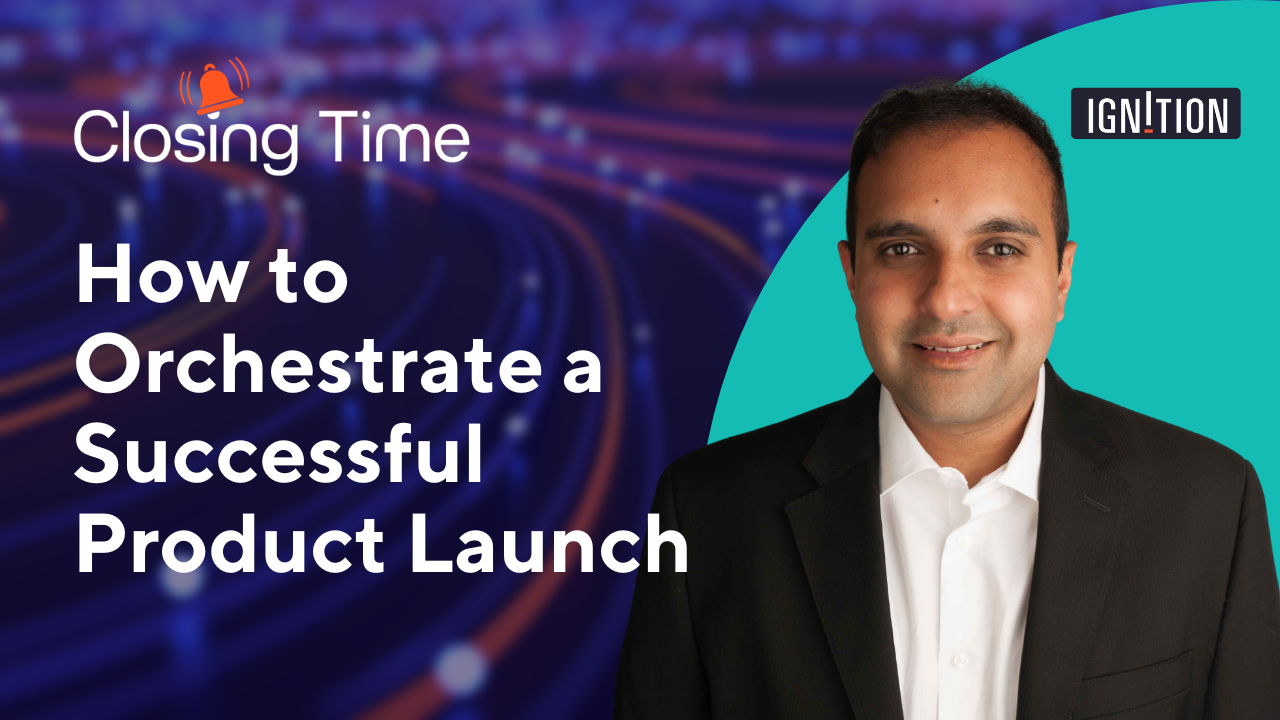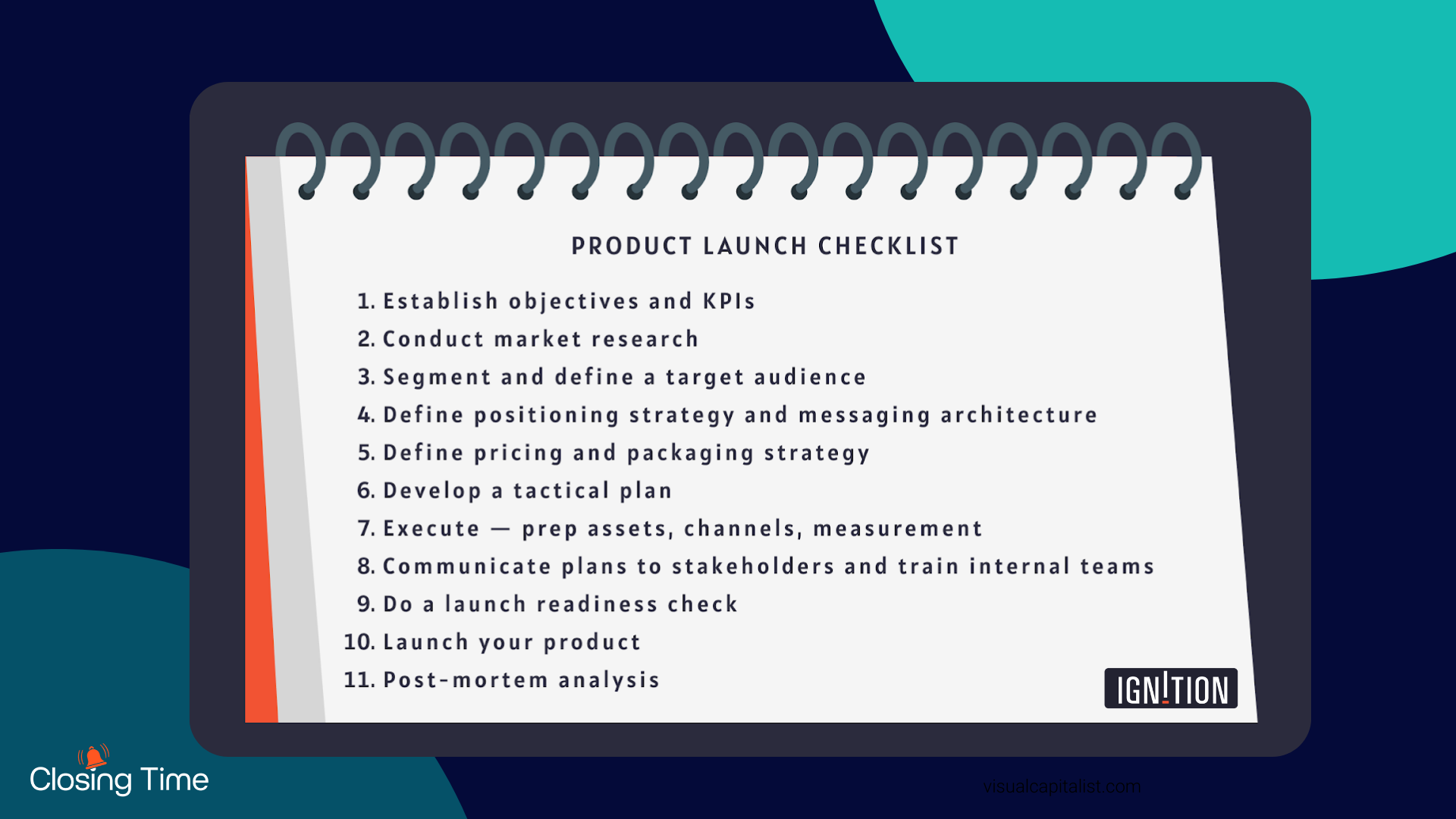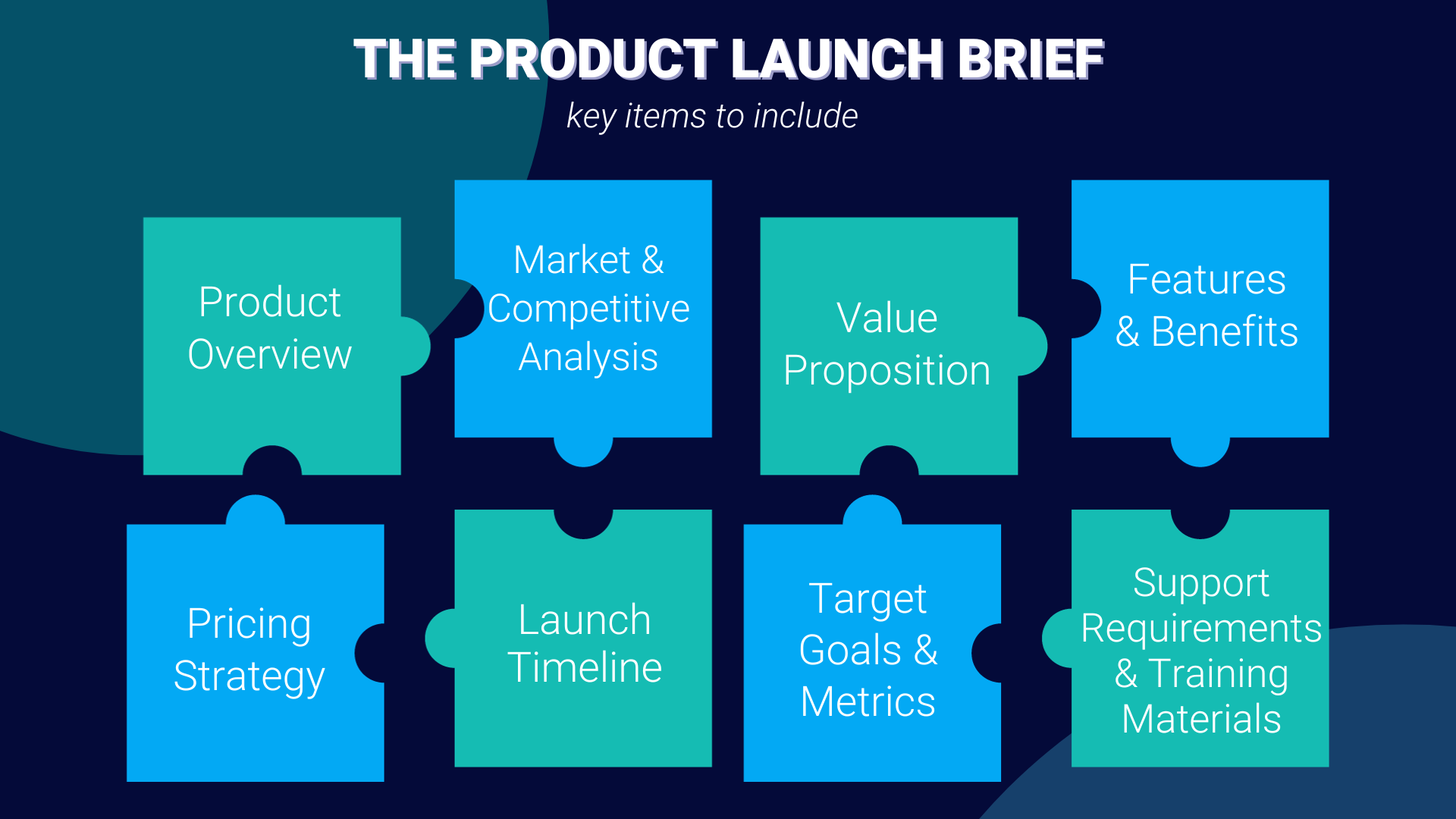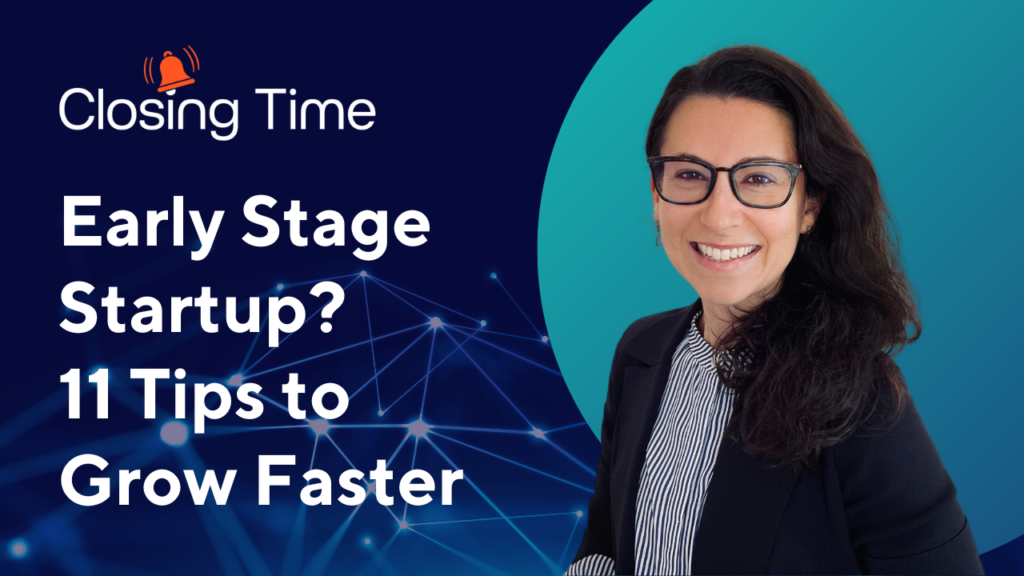What are the key
go to market roles when you’re introducing a new product or service?
We’re talking all about successful product launches
on this episode of Closing Time.
Thanks for tuning in to Closing Time the show for Go to Market Leaders.
I’m Chip House.
I’m the CMO at Insightly CRM.
I’m joined today by Karthik Suresh, who is the co-founder
and CPTO of Ignition, a product launch application.
Welcome to the show, Karthik.
Yeah, great to be here.. Thanks for having me.
So I’m excited about this topic because I’ve been in SaaS
for about 25 years and I’ve seen a lot of different product launches, right?
And some go, well, some don’t go that well.
And is it miscommunication or whatever at the heart of it?
I’m not sure, but I’m excited to drill into it with you.
So, I mean, what are your overall thoughts as I introduce this topic?
Yeah, this is something which is,
you know, close to my heart, which is why we started Ignition.
It’s one of those things which has a huge impact
on the product launch and adoption itself from your target audience.
But one of the most underinvested processes in the company.
And I mean, why do you think that is and why is it
an underinvested area when it’s so important?
Yeah, So I think the fundamental problem is because it involves very much
when you’re doing a product launch, most of the time
it’s like, oh, it’s only the marketing team’s job
or it’s only a specific person’s job to do the launch.
But more often than not, it’s actually a whole company
coming together to do the launch.
And you know, you have various teams
which are using fragmented tools and their processes
to actually come together to do the launch, So what what do I mean?
So just to take a step back, you know, what’s a product launch?
So when you think of a product launch, first,
you think about, okay,
you know,
when you’re launching a new product in the market,
then what are the objectives of the launch?
Who is my target audience like What’s my ICP?
Who’s the persona I am targeting?
And then once you know about the persona
and obviously assuming you’ve done a lot of research about the persona,
then the next step is really try and think about, okay,
like how do I message the product to this persona
so that they really understand the value prop.
And then once you message, once
you come up with the messaging, they need to do a whole positioning exercise.
We think about, how do you position
your product in the market with respect to other competitors?
How do you differentiate yourself?
Like why should people buy you verses another competitor?
And then you need to think about maybe some pricing changes.
So, you know, there’s a pricing exercise you should probably run.
And then finally, what are the list of marketing channels
I’m going to use to actually market this product, to get this product
in the hands of the target audience we just talked about?
And then once you want to finalize this plan,
then you still have to execute it, you know, you need to create collateral,
copy and assets for all these marketing campaigns, get approvals from the execs,
and then coordinate with engineering teams to make sure the product actually ships
on the specific date, especially if it’s a software product
and then let the salespeople know and the customer success know
that this is shipping.
So they are not caught
like surprised that this new feature ship and they never know about it.
And so there’s so many teams involved and you need to do a really good
stakeholder communication
so that the whole company knows about this launch, they can all support the launch.
And they can also talk about the launch of exactly the same page
so that they don’t confuse the end customer.
And then and then you do the launch.
This is like a whole process which probably takes
a few days to a few weeks to a few months, depending on the tier of the launch,
basically how big the launch is, how much money you’re investing
and also having a tiering process is very important.
And most of the time, at least in software companies,
you know
especially when you move to a more agile world and fast shipping
the product
launch is almost like I ship my product to production, and it’s launched
or I just send an email
to my all of my customers and it’s a launch and no, it’s not.
And that’s kind of a mentality which has been like so prevalent
and that’s one of the main reasons why.
And then then to add to that, everything is fragmented
because you have a launch brief, and the marketing, in some Google Docs,
your launch checklist in some spreadsheet or Asana and then your assets in Dropbox
and you know, your sales teams are using different platforms
and like product teams are on some kind of road mapping tool.
So all of these have to come together and they’re all very fragmented.
So it just adds more fuel to the fire.
So it’s like it becomes such a onerous task
to actually pull together everyone to get on the same page.
And more often than not, people are like, you know,
I’m just going to ship to production, send an email to the customers
and call it a day and then maybe just go to my happy hour.
Right, that’s typically what happens.
So I’ve
heard you describe this as it’s like an orchestra
because you have so many different players involved as you talked about
engineering, product team, product
marketing team, marketing more broadly, sales.
And then, you know, downstream you have the support teams
and the CS teams, they’re going to field, you know, any customer questions, etc.
on it
and even more teams, enablement or, you know, whatever in a complex
B2B organization.
And so, you know, an orchestra has a sheet of music to all follow, right?
And so when I think about the first mover in this process,
you know, we don’t have a composer, but we do have the engineering team
who’s producing the software.
So what is the engineering team
start out with to make sure this process goes smoothly?
Yeah, Yeah.. Orchestra is a perfect example.
And before I answer the question, you know, I think the person who
is leading the launch is
the main, the person actually leading the orchestra.
And that’s typically a product marketing manager.
But on the engineering team side,. I think there is also fundamentally
huge disconnect
between engineering and marketing teams in most of the companies I work for.
So some of the things which engineering leaders can specifically
do to ensure the product launch goes smoothly is, keep the marketing team
or the product marketer who’s running the launch informed, proactively informed
on the progress of the build.
It’s easy to, it seems obvious and it’s common sense,
but that’s the fundamental disconnect because more often than not,
like the marketer probably would have spent,
you know, creating all these assets, collateral, scheduled email
to go out to the customer, scheduled launch posts on LinkedIn and Twitter,
let’s say on September 15th and the engineering team
one day before like, Oh, you know what, sorry,
we’re going to delay the launch by another week and it’s
one day before the launch so then the marketing team has to scramble
and update all the dependencies and change the times.
I started my career as a software engineer, so I know both sides.
So a lot of the time they don’t appreciate how much work goes into a product
launch, right? So what’s a big deal?
You know, yeah,. I thought it’s going to ship this Friday.
It’s not. It’s going to ship next Friday.
Just make the changes and no.
It’s like you don’t understand how much work goes into it, you know,
all the dependencies
and I think so
coming back to the main question here is two fundamental things.
One, appreciate the fact that planning a launch
and executing a launch takes a lot of time and resources and moving dates
is very disruptive for the marketing teams.
And second, so please proactively communicate
on the status of the releases, especially if there are going to be delays
or if you foresee any delays, make sure you do that,
not just a few days in advance, at least a couple of weeks in advance.
Whose responsibility is that, Karthik?
I mean, whose responsibility is that Communication?
Yeah, so the communication.
So the person running the orchestra is still the product marketer.
Typically I’m just going to use a product marketing
manager, PMM, typically was running the launch or in much larger companies
there are actually dedicated GTM teams which actually run the launch
and they are the ones who basically like doing a pull from each team
as the launch date approaches, like, you know,
the marketing team has all these assets ready to copy,
the engineering team is shipping down, the PM team is like you know,
do you get all the approvals for the launch and all the things
so it should less be a pull and be a push
so the push then comes to the individual team owner.
So in this case it could be a product owner or engineering manager
depending on who’s responsible for making sure the product is shipped
well ahead of the launch and there is enough time for testing.
And also there’s obviously, there’s different phases of the launch.
There could be an alpha, beta,
general GA launch, so each one has to be coordinated separately.
So in this case, most of the time what I’ve seen is it’s more of a pull,
where that’s why, you know, it’s a PMM or GTM
team keeps pinging people, engineers,. PMs saying, is it done?
It is done?. Are we on time? Did we do that?
And it’s almost like annoying.
Okay, stop bugging me, you know,. I’ll let you know. But they don’t.
Unfortunately, they don’t let them proactively know.
So that’s why there is so many
messages back and forth.
But if each team, if you can identify clearly who’s a stakeholder for each team,
engineering, product management, sales, marketing, customer success,
and then make sure that it’s like a dedicated person who is actually pushing
the status, verses pulling to the person running the orchestra.
That would be an ideal setup.
You know, often with product launches, there’s customers
at the other end of this, right,
that have specific needs, and they might be waiting on some of this functionality,
especially if they’ve been exposed to the roadmap or vision of the product.
Right?
They expect some of these things to come and sort of the last people in line
sometimes on the product
launches are the customer facing people,
the sales team, the existing business sales team, this CS team.
And so what are some of the things that those people can do?
When I think about like a sales person to better
educate themselves, to better prepare for product launch.
That’s a really good question.
And it’s so company specific, depending on the company culture and how well
the product launches are coordinating.
In a lot of the organizations,. I’ve seen that unfortunately,
when the product launch happens, it’s not communicated well.
Maybe there’s one email which goes out and if you miss it, you don’t know about it.
So you’re kind of caught blindsided when you see this new feature
in the product you’re trying to demo
and you don’t even know what it is, especially as a sales person.
That’s very annoying.
But I think it’s less about the salespeople
making sure that they know first they have a
responsibility to make sure that they fully understand
the product and understand the features and the benefits.
But this is where the person who is running the orchestra comes in,
and in this case, the PMM or the PM, or the GTM team, it’s their responsibility
to make sure that everyone in the company knows
what’s shipping, when it’s shipping, how it’s going to impact existing customers,
will it close new deals, will it unblock some existing deals, like
do all that research
and create like a launch brief and then send it around the company
and then send it around multiple times so people actually get it, understand
it and use that.
For example, salespeople use it in the sales process.
Customer success teams know how to support that feature once it’s live.
So I think it’s less of their responsibility
and more of the responsibility of the person running the orchestra
to make sure that everyone in the company, every team has
their specific version of the launch.
So the customer success team, they don’t need to know all the technical details.
They just need to know
what are the most FAQs, or what are the issues with this product?
Sales people need to know how they can sell it and how
this differentiates from the other competitive products in the market.
So it’s up to the person laying the launch,
prepare those briefs on the launch, and then send it to each of these teams.
And then it’s up to the team to actually make sure they consume it
and then use it in the process.
Makes good sense.
Well, this has been a phenomenal discussion, Karthik.
So any final thoughts for me?
Yeah, I’ll just say like,. I think we’ve done a survey
with the Product Marketing Alliance and I think companies are leaving
on the table like millions of dollars in revenue
just by not investing in the launch process and therefore the customers
not being aware of all these new features and benefits which are shipping
and it affects upsells and it affects NRR and then it can go on.
So the easiest ROI, especially in today’s market
when everyone’s kind of scrambling for budget and the easiest way,
you know, you could you could get more revenue
from your existing team is, you know, investing in a solid launch process so.
Well, Karthik, thanks so much.. It was great having you.
Yeah thank you so much.. It was a great conversation.
Thank you. Absolutely.
And we’d like to do again some time.
And thanks to all of you for joining us on this episode of Closing Time.
And we’ll see you next time.






